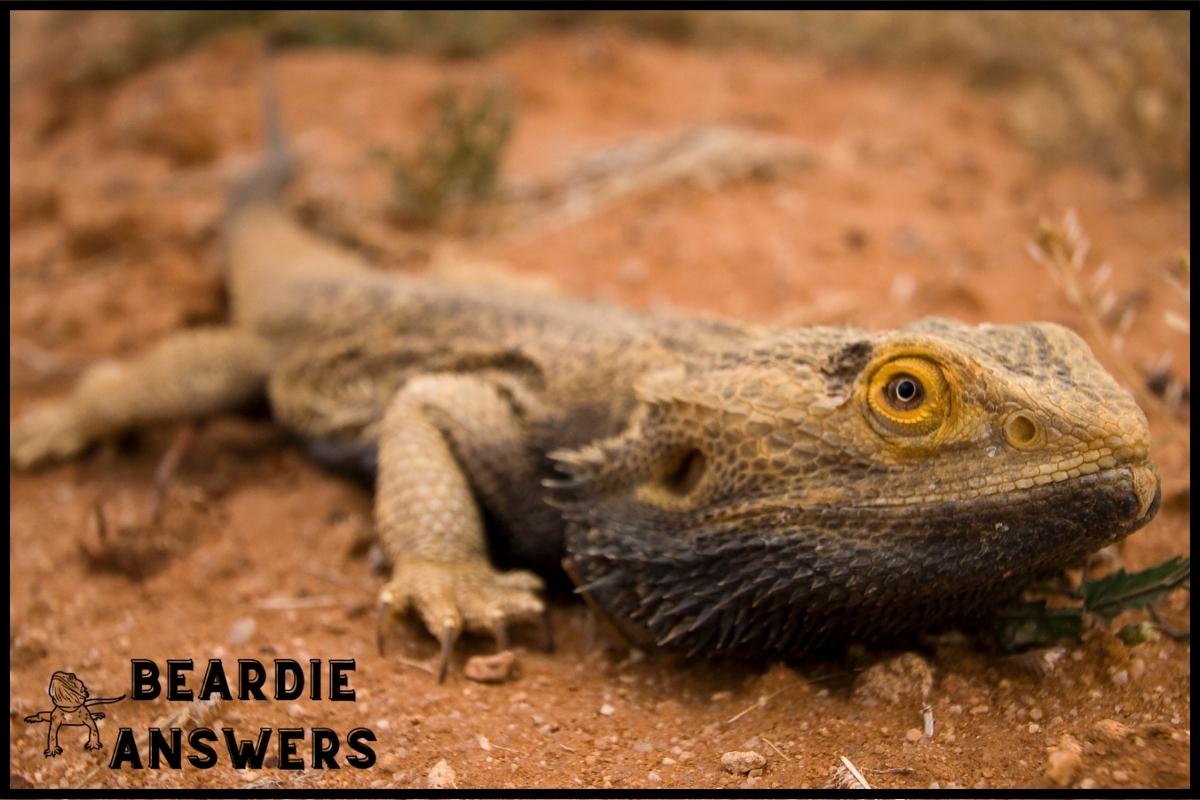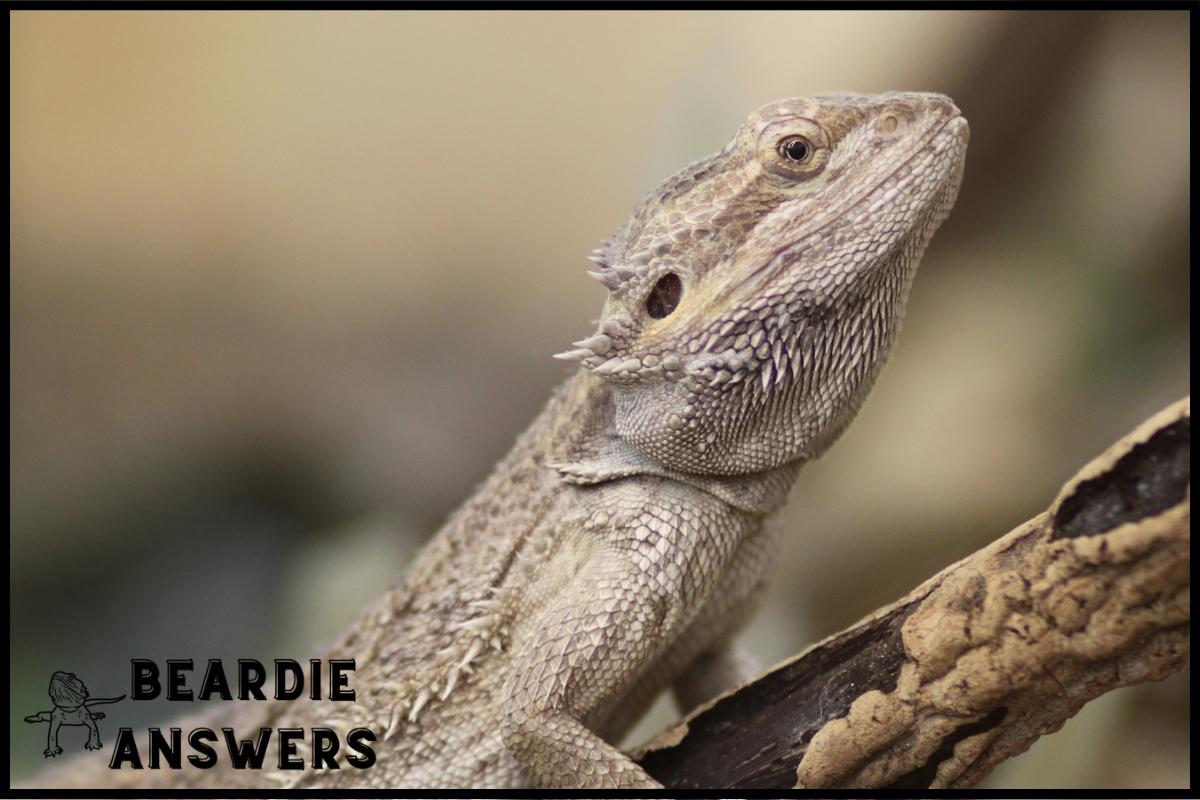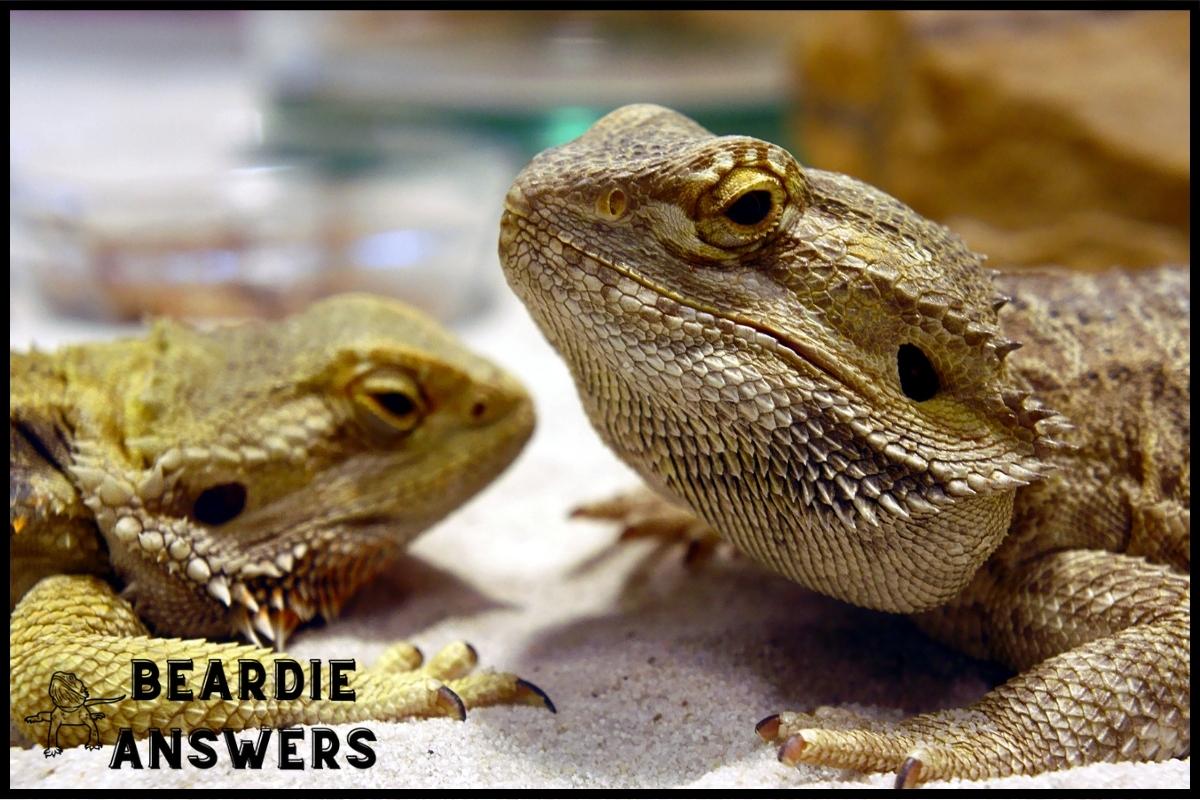Do you want to keep a bearded dragon as a pet? They’re adorable and make excellent companions, but they do pose some risks. In this blog post, we’ll go over the risks of owning a bearded dragon and what you can do to reduce them.
Potential Health Risks
Zoonotic Diseases
Bearded dragons, like other reptiles, are susceptible to a variety of zoonotic diseases. These are mostly bacterial infections caused by Salmonella, Mycobacterium, and Pseudomonas aeruginosa. These bacteria are capable of causing diarrhea, fever, headaches, stomach cramps, and even blood poisoning.
Salmonella
Salmonella is one of the most common zoonotic diseases that a bearded dragon can contract, as previously stated.
Salmonella infection symptoms typically appear between 8 and 72 hours after exposure and include diarrhea, fever, and abdominal cramps. Salmonella can enter the bloodstream and cause a prolonged fever and weight loss in some cases. Fortunately, the majority of people recover completely from a salmonella infection.
Allergies
Some people may develop allergic reactions to bearded dragons. Although the risk is low, people who are allergic to bearded dragons should be aware of the potential reactions that may occur when handling or interacting with one. People with allergies should use gloves when handling the pet and consider having someone else clean the cage and do other activities with the pet.
Mites That Can Cause a Range of Diseases
Mites can be a nuisance for owners of bearded dragons and can cause a variety of diseases in humans. These parasites are frequently found in the environment of reptiles and can be transmitted to humans through contact with the pet or their habitat.
Mites can irritate the skin, cause allergic reactions, and, in some cases, cause more serious health problems. Bearded dragon owners must regularly inspect their pet and their habitat for signs of mites and take appropriate action if any are discovered.
Potential Injury Risks
While bearded dragons are gentle creatures, they can injure their owners or other pets if handled incorrectly. Bearded dragon bites are possible. Scratches from bearded dragon claws can occur if they become scared or agitated. Tail whipping can also cause injury, though it is extremely rare for a bearded dragon to do so.
Bites
When it comes to bearded dragons, bites are a possibility. Although their venom is not poisonous to humans, their sharp teeth can cause painful injuries. Even if you handle your pet with care, they may bite if they are startled or threatened.
Aside from the pain of the bite, these injuries can become infected, resulting in blood clots and swelling of the affected area.
Scratches
Scratches are a common injury when working with a bearded dragon. Scratches can become infected and cause bacterial and fungal infections if not properly treated. To reduce the risk of infection, the cage must be cleaned on a regular basis.
Tail Whipping (Rare)
Tail whipping is one of the most uncommon, yet severe, injuries they can cause. Tail whipping occurs when a bearded dragon is startled or scared and attempts to flee by whipping its tail around quickly.
Although it is uncommon for a bearded dragon to whip a human with its tail, owners should be aware of the risks associated with owning one of these creatures.
Safety Measures
Wearing gloves when handling the bearded dragon is essential to avoid disease transmission.
The cage should be cleaned on a regular basis to reduce the risk of contracting illnesses from your pet.
It is also important not to kiss or cuddle with your pet, as this can increase the risk of disease transmission.
Finally, it is critical to take your pet to the veterinarian on a regular basis to ensure that they are in good health.
By taking these precautions, you can keep both you and your pet healthy and safe.
Wearing Gloves
Wearing gloves is an important safety precaution for anyone who owns a bearded dragon because it reduces the risk of both health and injury.
Gloves can help protect against zoonotic diseases like Salmonella, as well as allergic reactions and mites, which can cause a variety of diseases in humans.
Gloves can also protect against potential injuries such as bites and scratches. When handling your bearded dragon, wear long-sleeved shirts and gloves, and wash any wounds with soap and hot or warm water before disinfecting them with an antiseptic solution.
Wearing gloves is a simple way to reduce the risks of owning a bearded dragon and keep yourself and your pet safe.
Regularly Cleaning the Cage
This not only reduces the risk of potential health risks like salmonella, but it also helps to keep the environment free of mites and other parasites that can cause a variety of diseases in humans.
Cleaning frequencies will vary depending on the size of the cage and the number of bearded dragons living in it; however, cleaning at least once a week is recommended.
Warm soapy water and a mild disinfectant should be used to clean your bearded dragon’s cage. Pay special attention to corners and crevices where debris can accumulate when cleaning.
Replace soiled bedding with new bedding, such as Astroturf or reptile-safe sand, avoiding calci-sand, which can be harmful to reptiles if consumed. You can help keep your pet healthy and safe by devoting time to cleaning their cage on a regular basis.
Not Kissing or Snuggling with the Pet
Kissing or cuddling with a bearded dragon is not advised by medical professionals. Salmonella, a rapidly spreading disease, could be present in your pet, and contact with it could result in the germs entering your mouth. There is also the possibility of them biting or scratching you, which could result in an infection.
Visit the Vet Regularly
When you own a Bearded Dragon, you must take it to the vet on a regular basis. Regular check-ups can aid in the detection of any potential illnesses or parasites. It is recommended that you have your dragon checked by a veterinarian every 6-12 months.
To rule out other diseases, your veterinarian may suggest blood tests, bacterial cultures, or X-rays. You can keep your dragon healthy and happy by taking it to the vet on a regular basis.
This will not only keep your dragon healthy, but it will also give you peace of mind that your pet is in good hands.
Educate Yourself on Handling and Care
To ensure the safety of both you and your bearded dragon, it is critical that you educate yourself on proper bearded dragon handling and care.
Bearded dragons do not like being handled and can become stressed if handled too harshly or frequently. It is critical to learn how to handle a bearded dragon properly, such as using two hands and supporting their entire body, as well as understanding their body language.
A good bearded dragon owner will understand their pet’s needs, especially in terms of enclosure, diet, and health. Conducting research on these topics will assist you in ensuring that your pet is receiving the best possible care.
Key Points
- Bearded dragons, like other reptiles, can be carriers of zoonotic diseases like Salmonella, Mycobacterium, and Pseudomonas aeruginosa, which can cause diarrhea, fever, headache, stomach cramps, and even blood poisoning.
- Some people are allergic to bearded dragons, and they carry mites that can cause a variety of diseases in humans.
- While bearded dragons are gentle creatures, they can injure their owners or other pets if handled incorrectly. Bites, scratches, and tail whipping are all potential sources of injury.
- To reduce the risks of owning a bearded dragon, safety precautions such as wearing gloves when handling the pet, cleaning the cage on a regular basis, and visiting the vet on a regular basis should be taken.
- Cleaning the cage at least once a week with warm soapy water and a mild disinfectant can effectively reduce the risk of potential health risks like salmonella and keep the environment free of mites and other parasites.

Hi! My name is Bryan, I am the “one behind the words” here are BeardieAnswers.com. I believe that providing quality care and nutrition is the best way to ensure the health of your pet. Every beardie is special and deserves the best care and attention. If you have questions about your bearded dragon, please don’t hesitate to ask! View My Full Author Page




